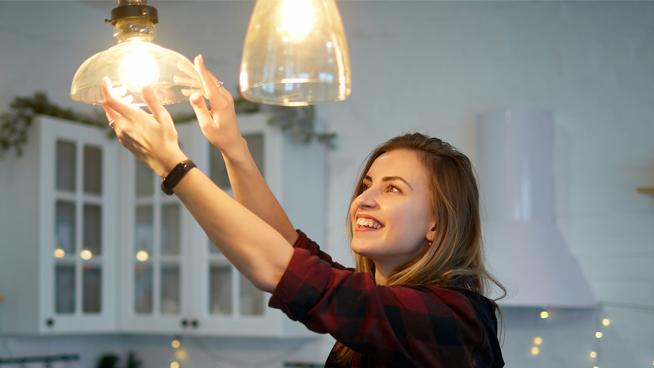The Inside Outside Guys: Lighting Up Your Life
From The Detroit News | By Ken Calverley and Chuck Breidenstein
DETROIT, March 28, 2024 ~ We underestimate the importance of light in our homes.
From safety to psychological to physical performance issues, light is a critical component of our daily existence.
In the northern climes, we are all aware of the potentially debilitating depression called Seasonal Affective Disorder, SAD, brought about by the lack of sunlight.
But light is also important for creating ambiance, performing specific tasks, for emergencies that may occur, for security, and for general purposes throughout the home.
In the recent past, we purchased and installed lighting based on input power, known as watts, instead of output lighting efficacy, known as lumens.
PODCAST:
March 30, 2024 ~ Chuck “The Inside Guy” Breidenstein and Ken “The Outside Guy” Calverly offer the knowledge and resources you need to make the home of your dreams a reality.
(CONTINUED)
We also have a nasty habit of simply installing a single ceiling fixture in the center of rooms without regard for what we would actually require the light for.
In kitchens, as an example, this often puts our work with a sharp knife in shadow as we stand between the light source and the countertop.
A lumen harkens back to the light created by one candle in 1 square foot, what we call a foot candle.
The building code makes reference to foot candles of light in such areas as stairways, but consumers are advised to simply understand lumens and what the industry calls correlated color temperature, CCR, in determining the appropriate bulb and fixture for a specific application.
You’ll recognize CCR as “cool” or “warm” light as measured on the Kelvin, K, scale. Pure white light is around 4,000 K as compared to a warm yellow of around 2,700 K.
Daylight is rated at 5,000 K or more.
Lighting issues in most homes include insufficient light, improper contrast, glare and poor light distribution.
Glare can result in veiling reflection on some surfaces which can translate to a safety issue, particularly for those with sight impairments. It compares to what we commonly call a mirage as heat is reflected from a surface creating a false image, often of water where water does not exist.
Think of polished wood floors or other hard surfaces in kitchens and baths.
For the elderly in particular, safety is a huge issue.
Security in and outside of the home can be provided by proper lighting that allows for recognition of people, navigation of obstacles and avoidance of hazards.
Bright, 4,000 K lights on motion sensors can help, particularly on the dark sides of the home.
Task lighting under kitchen wall cabinets to illuminate the countertops and stovetop can provide an additional measure of safety.
Fluorescent lighting in clothes closets can better help us distinguish color so we aren’t mismatching clothing.
Motion sensors installed in hallways and bathrooms might save us from a late-night trip and fall.
Light fixtures, and the bulbs they use, can be upgraded in a home with relative ease.
For design purposes, the lumen equivalent to watts is fairly simple to remember.
A 100-watt bulb is roughly equal to 1,600 lumens. Sixty watts, 800 lumens.
Packaging today will include this equivalency, so you can get both an idea of how much light the bulb will generate and how much energy it will take to operate.
Make certain the fixtures you choose are compatible with the bulb and type of light you desire.
The Department of Energy, DOE, tells us that LED bulbs today use up to 80% less energy than the incandescent we grew up with, so changing out those old fixtures might even save you money in the long run.
Keep in mind that adding or even changing light fixtures and switches is not a DIY project. Use professionals for both design and installation like those you can find every day at InsideOutsideGuys.com.
**
For more advice, listen to “The Inside Outside Guys” every Saturday and Sunday on 760 WJR from 10 a.m. to noon or contact them at InsideOutsideGuys.com.

